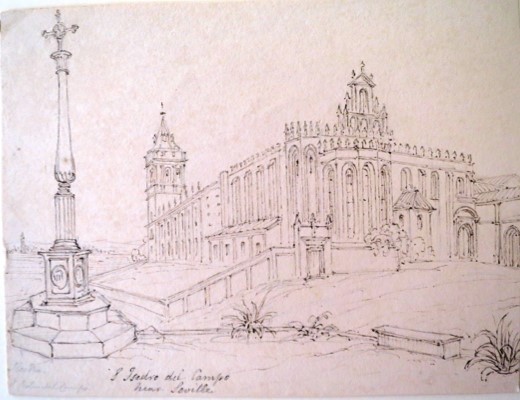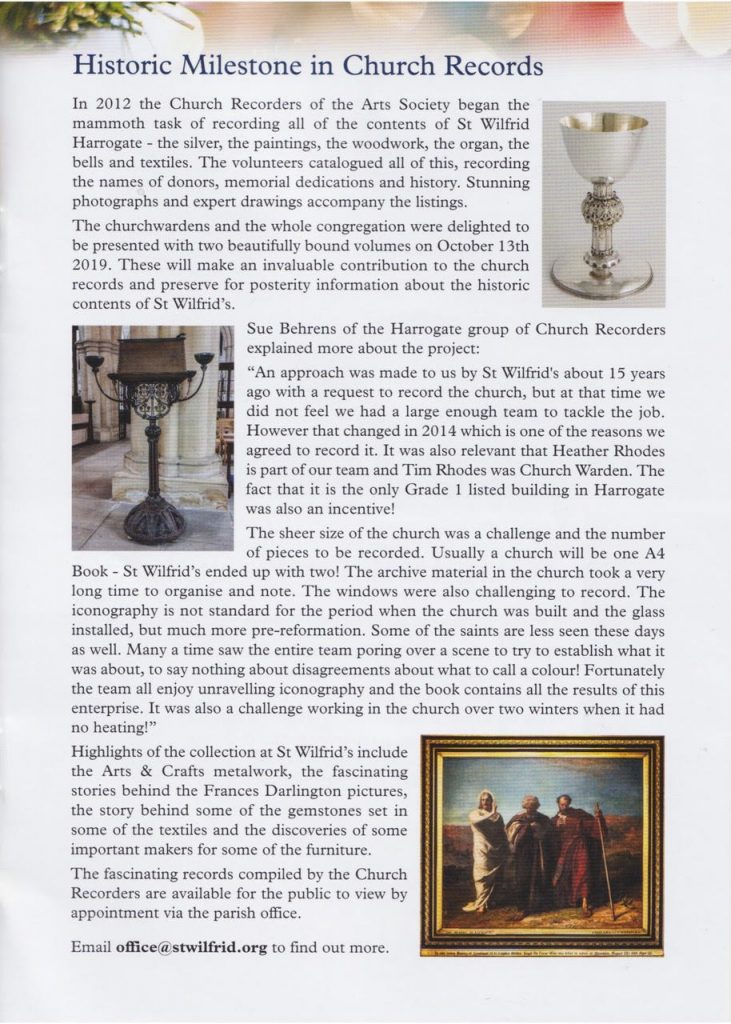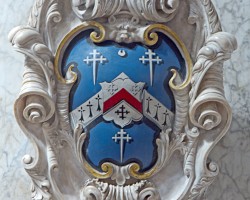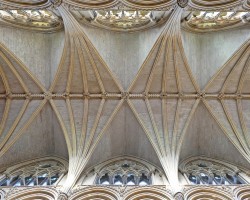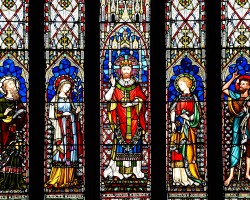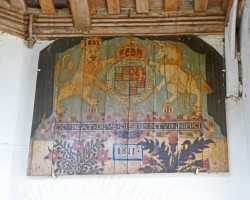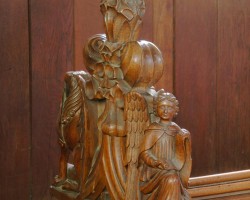Author: EastWindow
Ledgerstone Survey
The Ledgerstone Survey of England and Wales (LSEW) aims to record all the ledgerstones of England and Wales. Dr Julian Litten, described as “England’s foremost funerary historian, has developed a template for methodically recording ledgers which has been tested by the Church Recorders. Management of LSEW has been transferred to Church Recording Society which is keen that as many volunteers as possible record ledgers on the LSEW website before more disappear and to develop educational resources to enable anyone interested in their local ancestors, in letter cutting or the beauty of these stones, to access ledgers.
Church Recorders and other contributors should follow this link to access the LSEW website.

The website database for cataloguing Ledgerstones, operating as the ‘Ledgerstone Survey of England & Wales’, was adopted by Church Recording Society in April 2021.
Church Recorders are major contributors.
These are unique social history to be recorded before lost through wear and tear and closure of churches.
A Mystery Cup
A silver communion cup with a deep conical bowl just didn’t look right for the job. Engraved on the bowl on one side is the sacred monogram IHS, and on the other are armorial bearings on an oval medallion suspended from a ribbon above a wreath, and the date 1773.
Blazon: Per pale. Left side – Argent, a lion rampant Azure langued and armed Gules holding in his dexter paw a wreath of laurel proper and issuing from his mouth a scroll charged with the word EMMANUEL [EMMANUEL COLLEGE CAMBRIDGE].
Right side – impaled arms Ermine, a fess [HOMER].
Engraved beneath: Johan. Sudbury nuper Decan: Dunelm: Henrico Homer A.B. Coll: Emman. Αίεύ άριςεύειν. [Quotation from Homer’s Iliad: Always excel].
Engraved on the underside of the foot in copper-plate: The Gift of the Widow of the Revd. Spencer Cobbold, for Woolpit Church .
The Birmingham Assay Office’s date mark D is for 1776-77 – later than the date of 1773 on the inscription. Usually an item is made before it can be inscribed!
The clue was in the word Dunelm, the Latin name for Durham. After research by the Metalwork duo it was discovered that the cup was not intended to be a Communion cup but is one of the Sudbury Prizes awarded by Emmanuel College, Cambridge (whose arms are on the cup).
John Sudbury, (1604 – 1684), was born in Bury St Edmunds, educated at Emmanuel College, Cambridge, and later became Dean of Durham from 1661-1684. He endowed the annual prize of a sum of money for the best classics scholar of each year to commission his own silver cup. But in 1773 the prizeman, being a student, obviously used the money for other things and only had the prize cup made three years later, in 1776.
Henry Homer (1753 – 1791), a noted translator of classical works, won the prize in 1773.
The Revd Spencer Cobbold was Rector of St Mary’s Woolpit from 1831-1836; his widow was Henry Homer’s sister. The names Henry and Homer recur in three Rectors of Woolpit who descended from this family. It seems likely that the sacred monogram and the engraving on the edge and underside of the base were added when the cup was presented to the Church.
Emmanuel College were delighted to hear of the cup because this award had been given annually for 211 years from 1676 to 1887 but they only knew of 19 other extant Sudbury prize cups.
It wasn’t intended to be a communion cup but through a chain of members of one family it ended up in the Church where no-one likes using it for communion because it is just the wrong shape to sip from without being drenched in red wine!
West Suffolk and Bury St Edmunds Church Recording Group.
St John, Bishopstone – News from Seville
A few months after finishing our Church Record of St John Baptist Church in the summer of 2017, the Bishopstone village website was contacted by Martin, a student at Seville University studying for a PhD and investigating British people who visited Seville in the early 19th century. He had come across Reverend George Montgomery and his wife, and wondered whether there were any records of this in the village.
Our rector, Reverend George Augustus Montgomery from 1821 – 1842, did indeed travel to Seville with his wife, Cecilia, but we didn’t have any firm dates. From the research by Martin in Seville we now know that the Montgomerys were both there in 1838. He also produced some dated architectural drawings of churches and convents that Cecilia made during their visit.
During that time George Montgomery acquired many panels of wood from disused churches and convents. These have been transformed into the pulpit, reredos, lectern, vestry door and the backs to the chancel stalls.
On his visit here, Martin made some sketches from the woodwork in the church, and also saw the vicarage next to the church, which was built for the Montgomerys. So we were able to help him with his background studies!
Whilst here he visited the Wiltshire archives at Chippenham and was able to read our Church Record.
It was a wonderful moment for our church recording group to know that all our work is of continuing benefit to future researchers.
The Arts Society Sarum Church Recorders
Mary Lowndes Window – lessons in behaviour
This beautiful window is in the church of St Mary, Sennicotts, Funtington, West Sussex, a tiny church built in 1829 by Charles Baker the owner of Sennicotts house, who fell out with the local vicar and decided to build his own church and barred, by decree, the local vicar from ever preaching there. Not very Christian when compared to ”Acts of Mercy” the East Window designed by Mary Lowndes and erected in 1913.

This window depicts all the things Christians should do for others, feeding the hungry, giving the thirsty a drink, giving the lonely a home, clothing the naked, caring for the sick and visiting prisoners. It also depicts Faith Hope and Charity.
The designer, Mary Lowndes, was an amazing woman for her time (1856–1929). She founded the Glass House Studio in 1908, and arranged space in it for other glass designers to work. She also produced posters, badges and banners for the Suffragette movement and during the First World War, initiated the Chloroform appeal as anaesthetics in France were almost unobtainable, and she organised classes to train women to become acetylene-welders. By 1916 these newly trained women were competent enough to be working in Aircraft Factories.
By 1920 she owned her own car and had bought her own house, both unusual for a woman at that time. Her beautiful windows can be seen as far away as Nassau or as near to Sennicotts Church, as Boxgrove Priory.
Pam Hilton
Leader of Chichester Combined Church Recorders
A ‘Vinegar Bible’
Our recorder, who records the books in the Library section, came out of the vestry in St Andrew’s church Etchilhampton, Wiltshire, and said, excitedly, “We’ve got a Vinegar Bible!” “A vinegar what?” I said, not having a clue what she was talking about. She led me to the vestry where, on a table, there was a very large very old bible in a very sorry state.
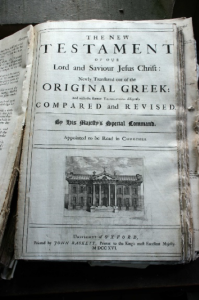
The bible was exactly 300 years old and many of the pages were very fragile and the case had come away from the block and the spine. There were many fine etchings in the opening pages which were still in good condition and Anji carefully turned to a page in St Luke 20 and pointed to what she was meaning. At the top of the page were the words “The parable of the vinegar”. The word “vinegar” had been amended, by hand, possibly nearly 300 years ago to read “vineyard“.
The printer was a John Baskett – Printer to the King’s Most Excellent Majesty. We will never know what befell John, if anything, for this unfortunate error, perhaps just embarrassment as one reviewer called this edition “A Baskett full of errors” as there were many other typographical errata in this edition. However, typos are not uncommon in old King James Version bibles and in one case some 85 years earlier than the Vinegar Bible a version now known as the “Adulterous Bible” or “Wicked Bible” was published with an error to the Seventh Commandment.
And what happened? Well that’s another story.
Robert East – Retired Leader of the combined Pewsey Vale and Devizes Church Recorders
Historic milestone in church records
Image Gallery
Churches recorded
Examples from a Church Record












